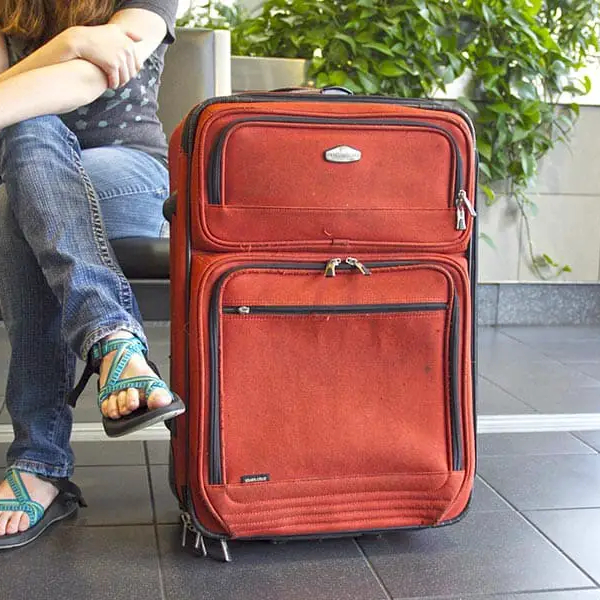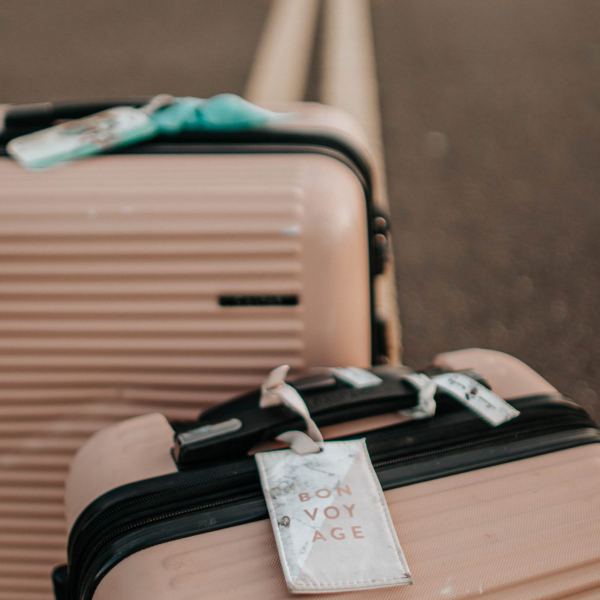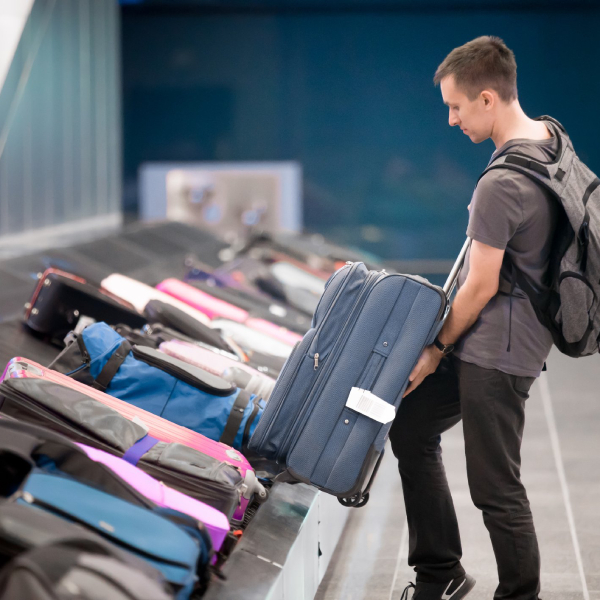Introduction to Airline Carry-On Policies
Navigating the world of airline carry-on policies can be complex. Understanding these guidelines is crucial for a hassle-free journey. Every airline has different rules for what qualifies as carry-on luggage. This not only includes size and weight but also the type of bag. Often, travelers wonder if a backpack is considered a carry-on. The answer depends on the airline and the backpack’s dimensions.

When planning to use a backpack as a carry-on, checking the airline’s specific restrictions is key. Most airlines provide clear carry-on dimensions and weight limits. Backpacks that fit under the seat or in the overhead compartment generally qualify. Yet, sizing up the right backpack for your travel needs requires attention to detail. By choosing wisely, you can avoid extra fees and enjoy peace of mind.
Packing a backpack for onboard use calls for strategy. You must pack light while considering TSA rules for carry-ons. Even with the right backpack size, over-packing can lead to unexpected complications. Knowing what you can and cannot bring onboard helps in packing efficiently. Stick to these guidelines and enjoy a smoother travel experience.
In summary, understanding and adhering to airline carry-on policies is essential for using a backpack as a carry-on. Inspect airline rules, measure your backpack, and pack smartly to prevent issues during your journey. It ensures that your travel starts off without any hitches and your belongings stay with you. To ensure a smooth travel experience, just like carefully packing your carry-on backpack, consider using a pioneer wallet to keep your essentials organized and easily accessible during your journey.
Understanding Size and Weight Restrictions for Backpacks
When flying, the size and weight of your backpack matter. Each airline has different rules. Typically, carry-on backpacks must measure within specific dimensions, often around 22 x 14 x 9 inches. Weight limits for carry-on bags also vary by airline. Some allow up to 22 pounds, others less. If your backpack exceeds these limits, you may have to check it in and pay fees. To ensure your backpack is considered a carry-on, check your airline’s restrictions before packing. It’s also wise to use a luggage scale to weigh your backpack after packing. Stay within size and weight boundaries to comfortably fit your backpack under the seat or in the overhead bin. Remember, overstepping these limits can complicate your travel and add unexpected costs. When preparing your carry-on backpack, it’s wise to include essentials like a black leather wallet to keep your travel documents and money organized, ensuring a smooth airport experience as you adhere to the size and weight restrictions.
Specific Airline Policies for Backpacks as Carry-Ons
When traveling by air, knowing airline-specific backpack policies is a must. As different airlines have unique requirements, checking with them before you pack is wise. Generally, a backpack is a personal item if it fits under the seat. If it’s larger, it may count as a standard carry-on, provided it meets size limits for the overhead bin.
Some airlines are more generous with their carry-on rules, allowing both a personal item and a carry-on bag. Southwest Airlines, for instance, lets passengers bring two items aboard. On the other hand, budget carriers might restrict you to one personal item that fits under the seat.
Airlines like Delta and American Airlines consider regular-size backpacks as carry-ons. They must fit within the dimensions of 22 by 14 by 9 inches. These dimensions are industry standards, but it’s crucial to verify with your airline for any variations.
United Airlines’ Basic Economy only allows for a personal item, heavily regulating the size of backpacks. For example, a backpack larger than 9 by 10 by 17 inches will likely need an upgrade to Economy for overhead bin use.
Remember, these policies can change, so it’s important to review them before you fly. Make a note of the allowed dimensions and weight for both personal items and carry-on luggage. By doing so, you avoid the inconvenience of repacking or paying extra fees at the airport.
Choosing the Right Backpack for Air Travel

Selecting the right backpack is crucial for air travel. It must meet airline size and weight limits. Look for backpacks with multiple compartments to organize your belongings. Ensure they can fit comfortably under the seat or in the overhead bin. Comfort is key, so choose one with padded straps and a sturdy frame. Opt for a backpack with a dedicated laptop sleeve for easy access. A water-resistant material is a bonus for unexpected spills. Remember to compare backpack features with your travel needs and airline rules. This will save you time and avoid extra charges at the airport. When selecting a backpack for air travel, consider how do I carry medication on a plane? Ensure your chosen pack has compartments to securely store your medication, making it easily accessible during the flight while adhering to airline regulations.
Packing Your Backpack for the Overhead Bin or Under the Seat
Packing your backpack for air travel requires smart planning. First, check if your backpack complies with airline size regulations for carry-on use. Ensure it will fit either under the seat or in the overhead bin of the aircraft you will be flying on.
Make the most of your backpack space without overstuffing. This will help it fit better in the allotted space. Roll your clothes to save space and reduce wrinkles. Use packing cubes or bags to organize items and make security checks simpler. Place heavier items at the bottom to maintain balance. Keep essentials, like travel documents and electronics, in easy-to-reach compartments.
To prepare for security screening, consult TSA guidelines beforehand. Make sure liquids are in containers no larger than 3.4 ounces. Place them in a clear, plastic, quart-sized bag. Electronics larger than a phone must be accessible for separate screening. Avoid packing prohibited items such as knives and large liquid containers.
Remember, space on planes is limited. Be considerate of other passengers when using the overhead bin. If asked by flight attendants to adjust your luggage, comply promptly. Respect for fellow travelers ensures a comfortable journey for everyone.
In sum, pack light, stay organized, and stick to airline and TSA rules. This will help you avoid last-minute stress and keep your journey smooth.
TSA Guidelines and Prohibited Items in Backpacks
Navigating TSA guidelines is essential for stress-free airport security clearance. TSA specifications limit the types of items you can pack in carry-on backpacks. To ensure compliance, be aware of TSA’s most crucial rules for carry-on backpacks. Firstly, all liquids, aerosols, gels, creams, and pastes must be 3.4 ounces (100 milliliters) or less per container. They must be in a single, clear, quart-sized, zip-top bag. Only one such bag is permitted per passenger. Larger quantities of medically necessary liquids are exceptions but must be declared to TSA officers.
Electronics larger than cell phones must be removed from backpacks and placed in bins for screening. This includes laptops, tablets, e-readers, and handheld game consoles. It’s wise to have these items easily accessible. Sharp objects like knives, scissors longer than 4 inches, and tools are prohibited in carry-on backpacks. Pack these items in checked luggage to avoid confiscation.
Lastly, prohibited items vary by country and airport. Always check the latest TSA guidelines before packing. Visit the TSA website or their mobile app for the most up-to-date information. Understanding these rules will keep your travel smooth and hassle-free. By following TSA guidelines and knowing what’s allowed, you’ll speed through security checks confidently.
Consequences of Over-Packing or Exceeding Size Limits
Exceeding an airline’s carry-on limits can lead to stress and extra fees. Over-packed backpacks may not fit overhead or under the seat. Staff may require you to check such bags, adding time and cost. Heavy backpacks can cause discomfort or injury when lifting into bins. Airlines may impose charges for overweight luggage, increasing travel expenses. Check your airline’s size and weight rules to avoid these issues. Careful packing can prevent last-minute rearrangement or leaving items behind. Always allow space for souvenirs or items purchased on your trip. Meeting carry-on policies ensures smoother boarding and a better flight experience.
When traveling, it’s essential to understand if a backpack is considered a carry-on, as adhering to the airline’s size and weight restrictions can significantly enhance your boarding experience and help avoid additional fees. Proper packing and awareness of these rules can lead to a more enjoyable journey.
Tips for Traveling With a Personal Item Backpack

When flying with a backpack as your personal item, you must follow the airline’s size guidelines. To ensure a stress-free trip with your backpack, here are some tips:
- Check size limits: Before your flight, confirm your backpack’s dimensions with the airline’s personal item criteria.
- Pack smart: Avoid overstuffing your backpack. Ensure there’s room for inflight necessities and easy access to items you’ll need.
- Stay organized: Use internal compartments and packing cubes to keep things tidy. This makes security checks and inflight access easier.
- Keep essentials handy: Store important items like your passport, tickets, and medication in easy-to-reach pockets.
- Comfort is key: Choose a backpack with padded straps for comfort while navigating the airport.
- Mind TSA rules: Remember the TSA’s liquid limits (3.4 ounces or less). Keep your electronics in an accessible spot for screenings.
- Consider a backup plan: If there’s a chance your backpack might be too big, plan for checking it in.
- Be prepared for plan B: If asked to check your backpack, store valuables and essentials on you or in a small bag.
Following these tips will help ensure your backpack serves as the perfect personal item for your next flight.
Checking Your Backpack: When Carry-On Isn’t an Option
Sometimes, bringing your backpack as a carry-on is not possible. This can be due to its size, the airline’s policy, or the additional items you need to pack. In these cases, checking your backpack becomes necessary. Understanding the process and preparing your backpack for check-in will help you avoid any travel hiccups.When traveling, it’s crucial to know if a backpack is considered a carry-on, as this will influence how you pack and whether you’ll need to check it in. Being informed about airline policies can ensure a smoother journey.
To check your backpack, follow these steps:
- Protect your backpack: Use a sturdy bag or a special backpack flight cover. This protects your backpack from damage during handling and transit.
- Secure all straps: Tuck in any loose straps and secure them tightly. This prevents them from getting caught in conveyor belts or other machinery.
- Remove prohibited items: Make sure all items in your backpack are allowed in checked luggage. Refer to TSA’s list of prohibited items.
- Consider bag weight: Airlines have weight limits for checked luggage. Make sure your backpack does not exceed these limits to avoid extra fees.
- Label your backpack: Attach a tag with your name and contact information. This helps in case your backpack gets misplaced.
- Arrive early: Allow extra time for check-in when you have to check your backpack. This gives you a buffer in case of long lines or issues.
If your backpack must be checked in, follow these tips for a smoother experience. Remember to check your airline’s policy for the most accurate and current information.
Summary and Final Recommendations for Backpack Travelers
Navigating airline policies for carry-on backpacks can be a breeze with the right know-how. Always consider size and weight restrictions when selecting a backpack for air travel. This ensures your bag will fit either under the seat or in the overhead bin, avoiding extra fees or check-in hassle.
Choose a backpack with multiple compartments for organization, and ensure it’s comfortable for carrying. A dedicated laptop section is a bonus, as is a water-resistant finish. Double-check your airline’s specific backpack policies to avoid surprises. Remember to pack smart, following TSA rules, to speed through security. When planning your travel, it’s essential to know if a backpack is considered a carry on, as this can affect how you organize your belongings. Opt for a well-structured bag with compartments and comfort features, and be mindful of airline policies to ensure a smooth journey.
If your backpack exceeds carry-on limits, prepare it for checking. This means securing straps, protecting it with a cover, and checking prohibited items. Label your bag clearly and weigh it to avoid fees for exceeding weight limits.
In summary, to make the most of your backpack as a personal item or carry-on:
- Check your airline’s size and weight guidelines carefully.
- Pack smart and stay within restrictions to save time and money.
- Organize your backpack and keep essentials within reach.
- Use TSA-friendly packing methods for easier security checks.
Follow these steps to ensure a smooth and successful journey with your backpack as your travel companion.